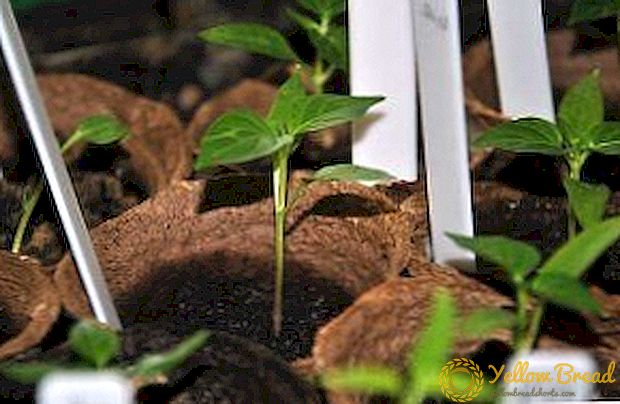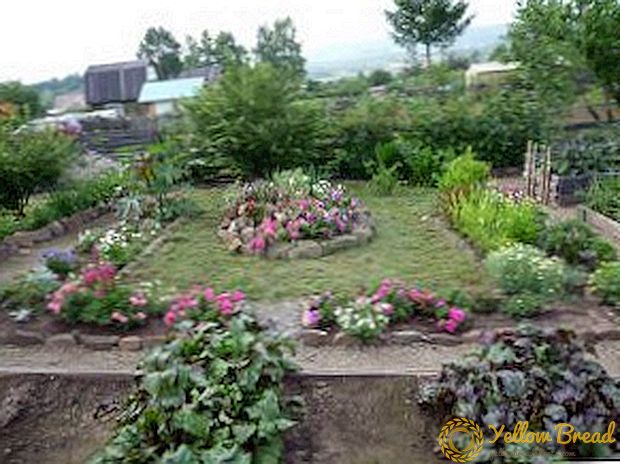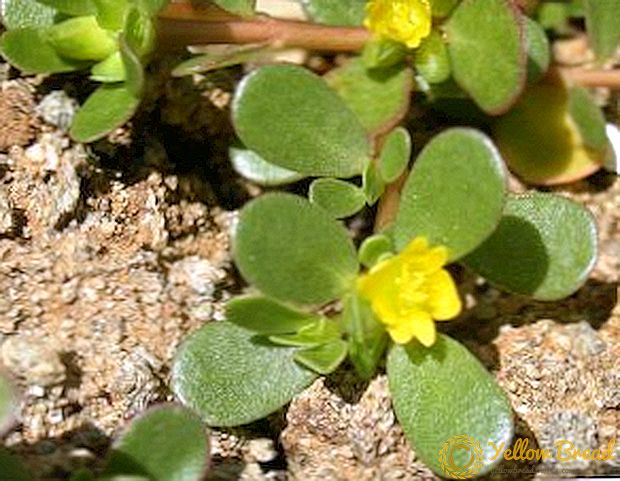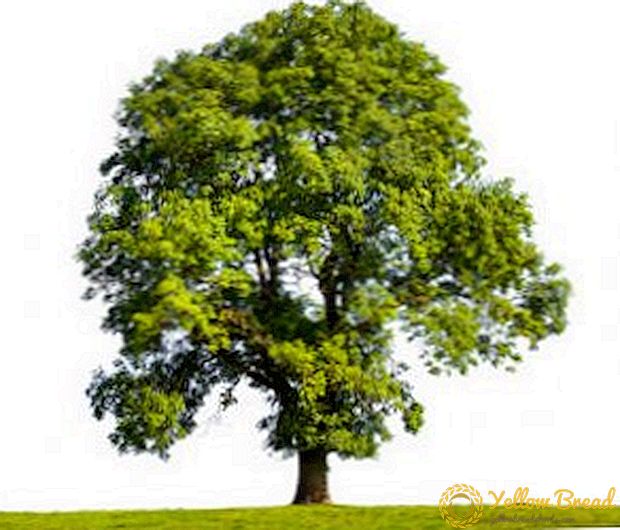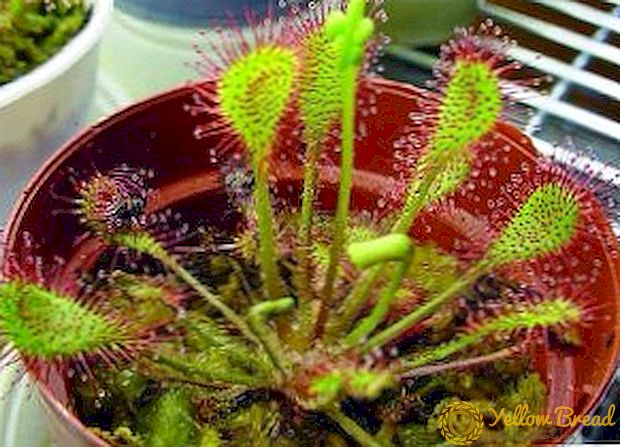 Evergreen Yucca has up to forty species of plants. Each of them has its differences in the form of leaves (smooth, jagged, spiked, with filaments, in the form of a sword), their color (gray, green, brownish) and the shape of buds (bell, bowl).
Evergreen Yucca has up to forty species of plants. Each of them has its differences in the form of leaves (smooth, jagged, spiked, with filaments, in the form of a sword), their color (gray, green, brownish) and the shape of buds (bell, bowl).
Unfortunately, at home, the room yucca rarely blooms, but many achieve this.
- Optimum conditions of keeping yucca in the house
- Location and lighting
- Temperature conditions
- Comprehensive care for yucca at home
- Watering and humidity
- Top dressing and fertilizer of yucca
- Trimming yucca
- Transplantation and soil composition
- Yucca breeding at home
Optimum conditions of keeping yucca in the house
Yucca is a southern plant, the optimal conditions for it are good lighting, warmth and moderate humidity.
Location and lighting
 If you have a heated balcony, the yucca will feel well, there she is provided with the maximum amount of light. On the window sill in the room the plant should not fall under direct sunlight, it is better if they are located at an angle.
If you have a heated balcony, the yucca will feel well, there she is provided with the maximum amount of light. On the window sill in the room the plant should not fall under direct sunlight, it is better if they are located at an angle.
In winter, the flower will require additional artificial lighting.Lacking light, the plant is developing poorly, the leaves turn pale, and the trunk can be deformed.
Temperature conditions
For the room flower of yucca during the period of growth, the temperature is desirable at about +25 degrees. During the rest period in winter, the temperature can be gradually reduced to +10 degrees. Uniform, without drops, lowering the temperature stimulates the formation of flower buds.
One of the conditions of flowering - this is compliance with the temperature regime. Yucca, like any southern plant, easily tolerates high temperatures, but reacts poorly to sudden jumps from heat to cold and vice versa.
Comprehensive care for yucca at home
No less important criteria for care than temperature are humidity, soil and lighting.
Watering and humidity
Yucca easily tolerates drought and does not require frequent watering. In spring and autumn, the plant is watered as the topsoil dries. In winter, watering yuccas reduce: no more than once every two weeks. Stagnant water in the soil can cause root rot and provoke plant diseases.
 Many varieties of yucca prefer dry air, they do not need to be sprayed, you can wipe the leaves to remove dust.
Many varieties of yucca prefer dry air, they do not need to be sprayed, you can wipe the leaves to remove dust.
Yukka, which loves moisture and regular spraying, should not be placed under direct sunlight after moistening. Wet leaves can cause severe burns.
Water treatments in the form of the soul like all types of plants, after such irrigation, before putting the yucca in place, dry the leaves.
Top dressing and fertilizer of yucca
During the growth period, the yucca needs feeding. It is advisable to feed the foliar method with mineral liquid formulations, diluting with twice more water than indicated in the instructions for the preparation. Spray the underside of the leaves with the preparation - the plant responds well to this.
In the spring and summer feeding is made every three weeks. In the fall and in the winter period, the plant is not fertilized. Fertilizer for yucca at home can be taken and organic, for example, infusion of cow manure with leaf humus.
Trimming yucca
 If your plant goes into growth, losing a decorative look, cut the branch, leaving two or three buds. Process cut place with crushed activated carbon.After three to four weeks, the buds under the cut will awaken and empty the young leaves.
If your plant goes into growth, losing a decorative look, cut the branch, leaving two or three buds. Process cut place with crushed activated carbon.After three to four weeks, the buds under the cut will awaken and empty the young leaves.
Do not throw away the cut branch, it can be used as a cutting. Pruning yucca at home will rejuvenate the plant and give it a well-groomed appearance.
Transplantation and soil composition
Yucca grows, and with it increases its root system. For normal growth and development, the plant is transplanted. There are several nuances of how to seated a yucca. Transplantation is carried out in the spring so that the plant can settle in a new place.
Young intensively growing plants require transplantation every year, adult specimens - every four years. The starting point for transplanting will be the yucca root system, which has grown all over the pot.
 Properly replant the plant, rolling it over from the pot to minimize root damage and stress of the yucca. For transplanting suitable universal primer with the addition of perlite.A yucca pot must be larger than the previous one and have drainage so that water does not stand at the bottom of the pot.
Properly replant the plant, rolling it over from the pot to minimize root damage and stress of the yucca. For transplanting suitable universal primer with the addition of perlite.A yucca pot must be larger than the previous one and have drainage so that water does not stand at the bottom of the pot.
Yucca breeding at home
For breeding yucca there are several ways.
For sowing seeds preparing a light soil for yucca is a mixture of turf and leafy land with sand. Seeds are sown in a box with moistened soil, covered with glass. Crops regularly air and check the soil moisture. When the seeds sprout (after a month), they are transplanted into separate pots.
When breeding shoots from the adult plant gently separate the child side escape. For rooting it is placed in a container with water or in wet sand. When the roots appear on the shoot, it can be transplanted into a pot with prepared soil.
Cuttings get, cutting the stem of the plant into individual shoots up to 10 cm long. The top is planted in a mixture of turf land with sand, creating a greenhouse effect. The remaining shoots deepen into the soil horizontally, lightly sprinkled.When new shoots appear on the ground, the stalk is removed from the ground, the shoots are separated and transplanted into pots. 
When the yucca blooms, it is impossible to take your eyes off of it. White small bells on a palm tree - a spectacle just fascinating. Many growers say that at home the plant does not bloom, while others advise you not to neglect the care, but not to overdo it, and then the desired flowering still will please you.

